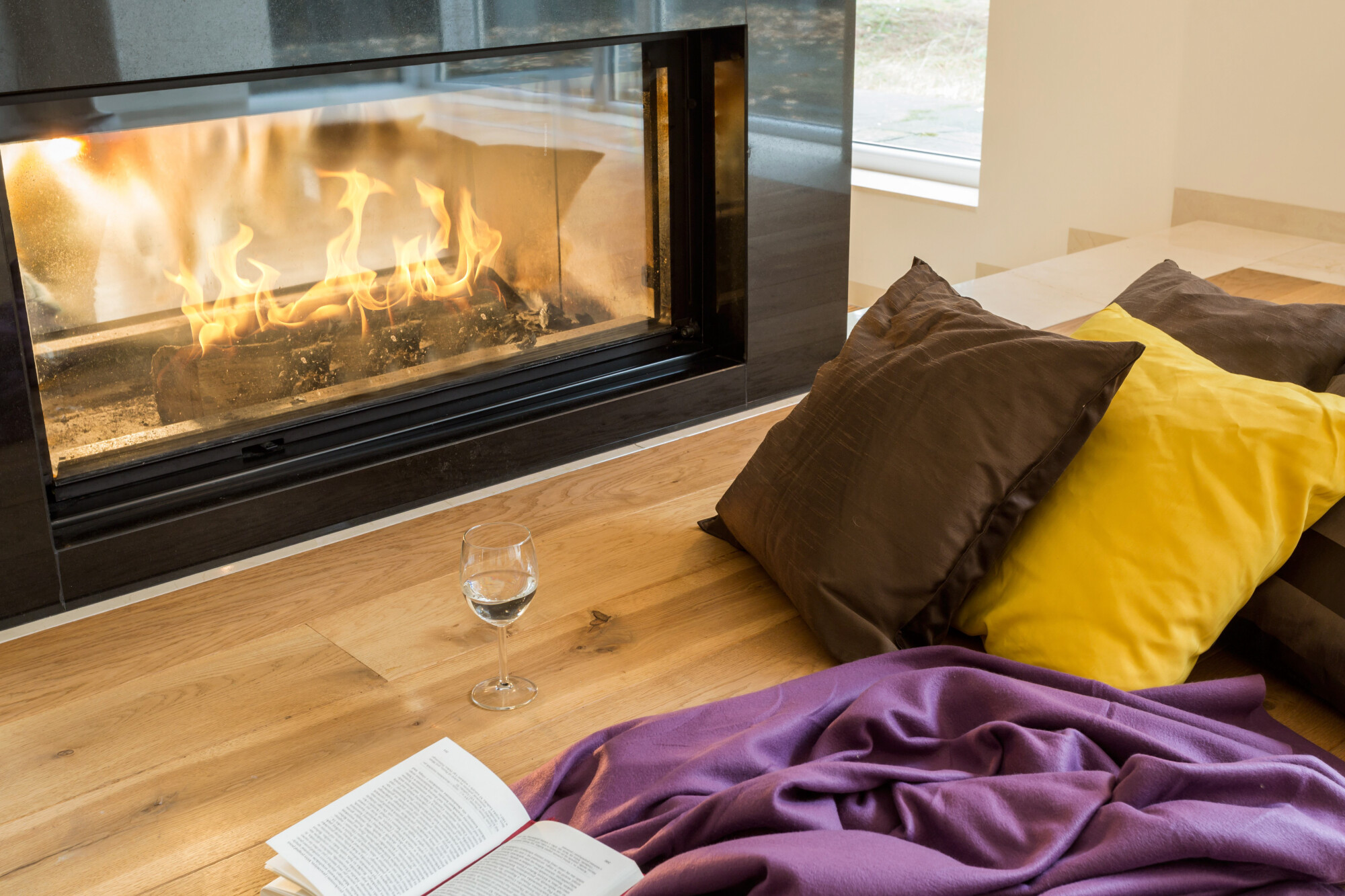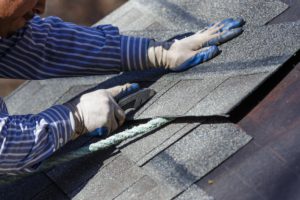Nearly 44% of single-family homes have a least one fireplace. A fireplace is a perfect addition to any home. It not only provides warmth and comfort but also adds to the aesthetic appeal of your living space.
If you have an outdated fireplace, it may be time for a replacement. With so many fireplace designs and types available, it can be challenging to know which one to choose. Below is a guide that highlights everything you need to know about fireplace replacement options.
Wood Fireplaces
Wood fireplaces are a classic and rustic way to bring warmth and comfort to your home. With the crackle and scent of burning wood, they create a cozy ambiance that electric or gas fireplaces simply cannot match.
Pros and Cons of Wood Fireplaces
While they provide warmth and coziness, there are also downsides to consider. Let’s dive in and explore the benefits and drawbacks of this popular heating option.
Ambience
A wood fireplace creates a cozy and inviting atmosphere. As a result, you can find it relaxing and enjoyable.
Cost-Effective
If you have access to free or inexpensive firewood, a wood fireplace can be a cost-effective heating option compared to gas or electric options. This can help reduce heating costs during the winter months.
Independence
You don’t need to depend on electricity or gas lines to operate a wood fireplace. This can be a good option during power outages or emergencies.
Energy Efficiency
Wood is a renewable resource. As a result, burning wood can be an efficient way to heat your home if you have access to a ready supply of wood.
Maintenance
Wood fireplaces require regular cleaning to remove soot and creosote buildup. Creosote is brown or black residues that are a major cause of chimney obstruction or fire. Soot can also increase the chances of a fire.
Health Hazards
Improper ventilation can lead to carbon monoxide poisoning. Wood smoke can cause respiratory problems, especially if you have pre-existing conditions like asthma or allergies.
Safety Concerns
Wood fireplaces pose a fire risk, especially if the chimney isn’t cleaned regularly. What’s more, sparks or embers can escape the fireplace and ignite nearby objects. This can cause a fire.
Environmental Impact
While wood is a renewable resource, sourcing it can contribute to deforestation. Proper wood sourcing laws and regulations must be followed.
Electric Fireplaces
Electric fireplaces are a modern alternative to traditional wood or gas fireplaces. They use electricity to power realistic flame effects and heat generation.
Pros and Cons of Electric Fireplaces
Like any home heating option, there are both pros and cons to consider. Here’s a closer look at the advantages and disadvantages of electric fireplaces to help you decide if it’s the right choice for your home.
Easy Installation
You can install them almost anywhere. Also, they don’t require a chimney or ventilation. You simply need to plug them into an electrical outlet.
This makes them a great option for apartments or other homes where traditional fireplaces aren’t feasible.
Energy-Efficient
Electric fireplaces are energy-efficient. You can use them year-round as a heating source.
These fireplaces often use less energy than traditional fireplaces. As a result, it can help reduce your energy bills.
Low Maintenance
These fireplaces require very little maintenance. There is no need to clean up ashes or soot. What’s more, they don’t produce any harmful emissions.
Versatile
From freestanding and wall-mounted to insert models, electric fireplaces come in a variety of designs and styles. This makes them a versatile choice for any home.
Limited Heat Output
While electric fireplaces are energy-efficient, they produce less heat compared to wood fireplaces.
Artificial Flame
Electric fireplaces use artificial flame technology. This may not provide the same ambience as a real fire. They also don’t produce the same crackling sounds or smells, making them less realistic.
Dependence on Electricity
These fireplaces rely entirely on electricity. If there is a power outage or electrical failure, they will not function. This can be a disadvantage if you live in an area with an unreliable power supply.
Vent-Free Gas Fireplaces
Also known as ventless fireplaces, this type of gas fireplace doesn’t require a chimney or venting system to operate. Instead, they use advanced combustion technology to burn gas cleanly and efficiently.
Pros and Cons of Vent-Free Gas Fireplaces
Vent-free gas fireplaces provide an easy-to-install, cost-effective heating option for homeowners. But they also come with potential safety and air quality concerns. Learn more below.
Easy Installation
Vent-free gas fireplaces can be installed without a chimney or vent. This makes them a suitable choice for a property without existing chimneys or venting systems.
Energy Efficient
Since vent-free gas fireplaces don’t lose heat through a chimney or vent, they are more energy-efficient. They also convert a large portion of the fuel’s energy into heat, reducing wastage.
Convenient
These fireplaces are designed for convenience. You can control them with a remote, wall switch, or thermostat. This allows you to adjust the temperature and flame height with ease.
Some models can come with programmable timers. As a result, you can set the fireplace to turn on and off at specific times.
Cost-Effective
Vent-free units are usually more affordable since you don’t need to drill any holes for ventilation tubes. They’re also more efficient in consumption.
Poor Indoor Air Quality
Since vent-free gas fireplaces don’t vent outside, they can produce harmful gases such as carbon monoxide and nitrogen dioxide. This can be harmful if the fireplace isn’t properly installed or maintained.
Moisture Accumulation
Vent-free gas fireplaces produce water vapor as a byproduct of combustion. This can lead to moisture build-up, causing mold or mildew growth in your home.
Limited Fuel Options
These fireplaces are specifically designed to operate with natural gas or propane. If your home doesn’t have a natural gas supply or propane, you may need to explore other heating options.
Vent Gas Fireplace
Vented gas fireplaces provide a safe and efficient heating option, with the added benefit of a real flame that can be adjusted with a thermostat or remote control. They come in a variety of styles and sizes to fit any home décor, from traditional to modern.
Pros and Cons of Vent Gas Fireplace
Like any heating appliance, they come with their own set of pros and cons. Let’s explore the advantages and disadvantages of vent gas fireplaces.
Safe
Vent gas fireplaces are safer than their vent-free counterparts. They expel harmful gases that can pose serious health hazards outside your home. This includes carbon monoxide, nitrogen dioxide, and other volatile organic compounds (VOCs).
Energy Efficient
Vented gas fireplaces are highly efficient. This is because they use a sealed combustion chamber that draws in air from outside and releases exhaust outside. As a result, you can enjoy the warmth without losing heat.
Expensive
Vented gas fireplaces are more costly than vent-free models. Installation costs are higher as you need to install a vent system or chimney to the outside. They also need regular maintenance, adding to the overall cost of ownership.
Limited Heat Output
While vented gas fireplaces are highly efficient, they may not provide as much heat output as wood-burning or even vent-free gas fireplaces.
Ethanol Fireplaces
Ethanol fireplaces are a type of fireplace that burns ethanol as a fuel source. This is a renewable and clean-burning fuel, making it an eco-friendly option.
Pros and Cons of Ethanol Fireplaces
Not sure whether this type of fireplace is right for your home? Below are the pros and cons to help you make a decision.
Easy Installation
These fireplaces are easy to install. They can be set up quickly without the need for a chimney or flue.
Clean-Burning
Ethanol fireplaces produce a clean, smoke-free flame that doesn’t release harmful emissions into the air. This makes them an eco-friendly option.
No Maintenance
Ethanol fireplaces require very little maintenance. They aren’t ashes to clean up or logs to replace, saving time and effort.
Flexible Placement
Since they don’t require a chimney or flue, you can install ethanol fireplaces in a wide range of locations. Ensure the space is well-ventilated.
Fuel Consumption
Ethanol fireplaces burn fuel quickly. This means they may require more frequent refills than other gas fireplaces.
Limited Heat Output
While ethanol fireplaces produce a flame, they may not provide as much heat output as traditional fireplaces or other heating sources.
Fire Hazard
Ethanol is a highly flammable liquid. If you don’t use it properly, it can be dangerous. Ensure you follow the manufacturer’s instructions carefully to take all necessary safety precautions.
Expensive
Ethanol fireplaces can be more expensive than traditional fireplaces, especially if you opt for a high-end design.
Factors to Consider When Choosing a Fireplace Replacement Option
If you’re looking to replace your fireplace, you have several options. Here are some of the most important factors to keep in mind.
Fireplace Design
Fireplace designs can vary from home to home. Some homeowners prefer the traditional fireplace while others love a more modern style. Rustic fireplaces are also becoming popular.
Consider the design of the fireplace. It should complement your existing home décor. If you don’t know where to start, check out some fireplace design ideas online to find what you like.
Fireplace Manufacturers
Once you know what you want, the next step is learning about the industry’s leading fireplace brands. It is good to buy a fireplace from reputable brands since they can guarantee quality. To get the best gas fireplace manufacturers, you will have to do some research.
Fireplace Installation
If you find a fireplace you prefer, it’s time to look into the installation options. You can install your fireplace in a variety of ways depending on the functionality and appearance you prefer. These include wall-mounted, free-standing, or built-in fireplace inserts.
Also, consider the modifications required for your home like adding a chimney or vent. Ensure you also find the right professional to mount your fireplace.
Cost
Consider the cost of the fireplace replacement and maintenance. Make a budget that accounts for the price point of the fireplace, its installation, and also upkeep. This will help you make a wise investment.
Get High-Quality Fireplace Replacement Solutions
Got an old or damaged fireplace? It may be time to consider fireplace replacement. For replacement, there are a lot of options to choose from. Always hire professional fireplace experts to get the job done.
Browse our blog to learn more about home improvement options.





Be First to Comment